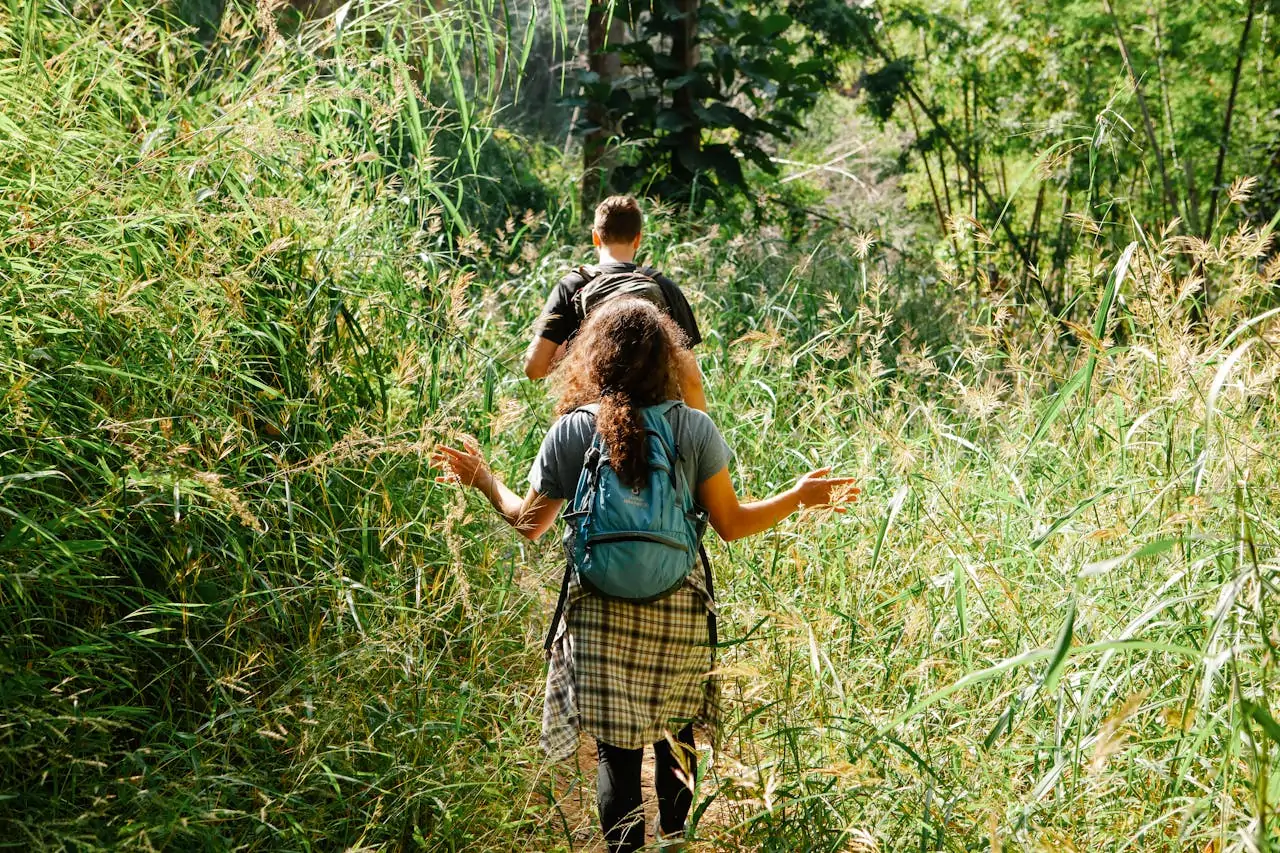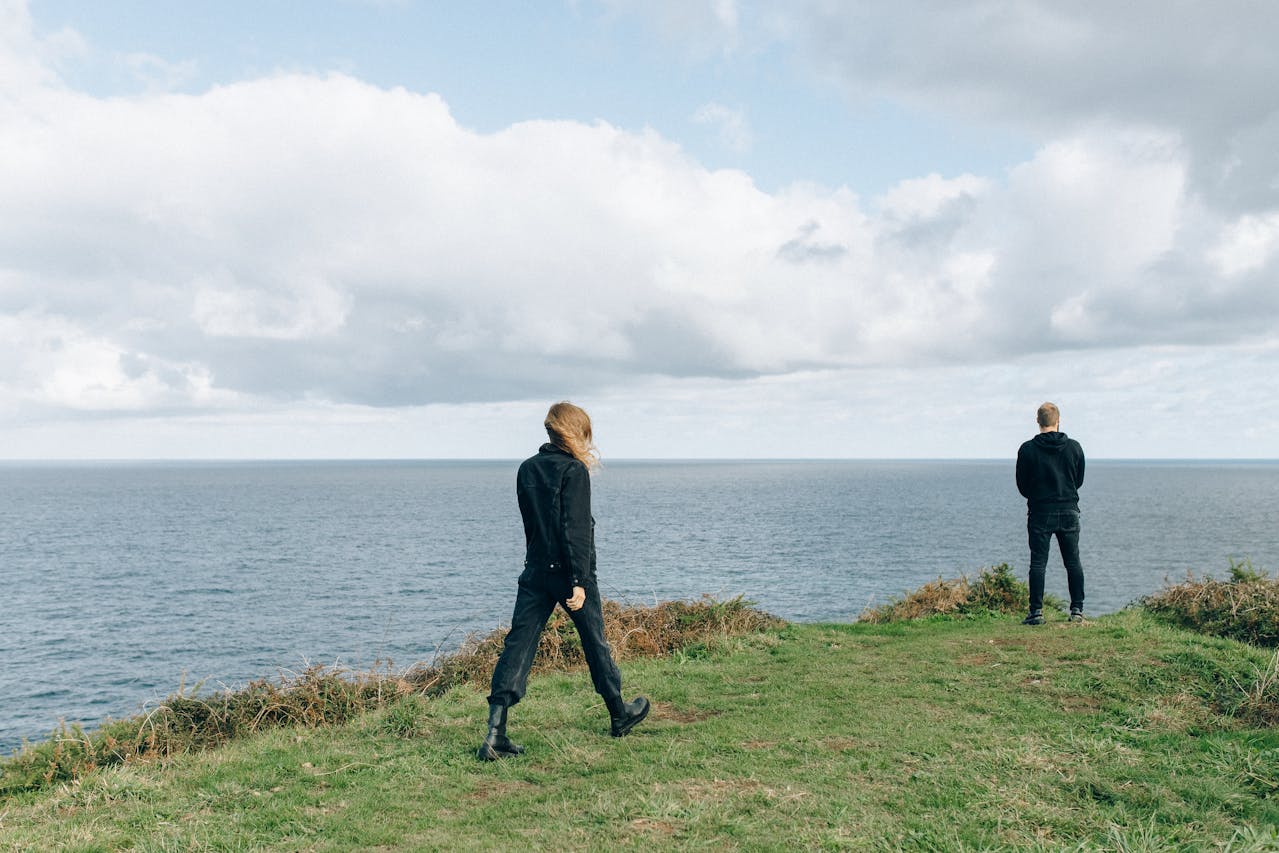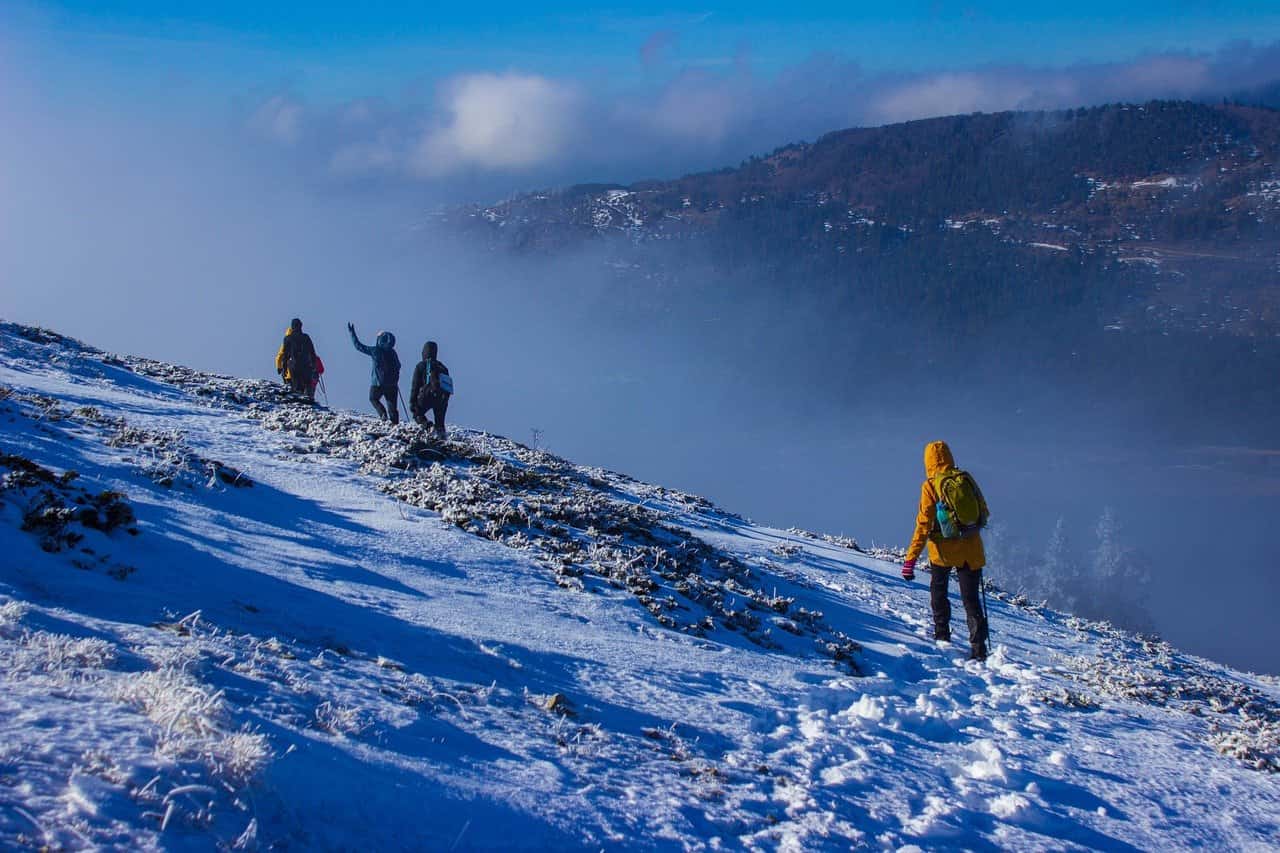In this article, I will share how to avoid getting lost while hiking.
Back in 2020, I went on a backpacking trip with some friends in California’s Desolation Wilderness. The trail was covered in snow, making it hard to see where we were going.
Since were not well-prepared. We only had a simple map from my hiking book and nothing else—no compass, GPS, or extra supplies. We got lost and it took us more then 8 hours of searching and many failed phone calls to find our way back to the trail.
From this experience, I learned two important things: 1) You need a good map and the right tools to find your way, and 2) You need to know how to use them.
In this blog post, I will share tips and tools to help you avoid getting lost while hiking. With the right skills and gear, you can stay safe and not end up in a situation like mine.
1) Develop Basic Trail Skills
Just like knowing how to stay safe on the streets, there are smart ways to stay safe on the trails when you’re hiking. Here’s a checklist to help you prepare:
Tell Someone: Let a friend or family member know where you’re going, when you’ll be back, and your plans. If you get lost, they can tell rescuers where to look for you. Some hikers also leave a note in their car for extra safety.
Check for Updates: Look at the park’s website and check the weather report before you go.
Sign In and Out: Make sure to sign in and out of any shelter or trail registers.
Pack Enough Supplies: Bring plenty of food and water with you.
First Aid Kit: Carry a small first aid kit and learn the basics of treating minor injuries, like stopping bleeding, so you can get to safety if needed.
Charge Your Phone: Charge your phone before you start hiking. If you plan to use it for navigation, you might want to bring an extra battery pack.
Extra Clothing and Light: Bring extra clothes to stay warm and a headlamp for light.
Bring the Essentials: Always bring the ten essential items for hiking, especially in emergencies.
Backup Navigation: Don’t forget to pack a map, compass, or handheld GPS as a backup to help you find your way.
2) How to Read a Topo Map and Use A Compass
Here’s the deal: You can’t just depend on cellphones when you’re hiking, especially if you get lost in the woods. While there are lots of useful hiking apps, your phone might run out of battery or have technical issues, so you need a backup plan.
A map is the most important tool you need to avoid getting lost. Before you start hiking, get a good idea of where the trail goes. During your hike, check your map regularly and use landmarks around you to figure out where you are. This way, you’re less likely to get lost.
A compass is also really helpful. If you get completely confused, a compass and a good map can help you find your way.
Both a map and a compass are part of the ten essential items you should always have with you when you’re outdoors.
3) Stay on the Trail
To avoid getting lost while hiking, it’s really important to stay on the trail. If you’re not experienced with navigating in the woods, try not to leave the trail at all.
If you do need to step off the trail, for example, to go to the bathroom, be sure to remember the direction you’re heading and where you left the trail. This way, you’ll know how to get back to the trail without getting lost.
4) Use a GPS to Avoid Getting Lost While Hiking
A handheld GPS is really helpful when you’re out in the wild. It can show you exactly where you are, and you can even download special maps and plan your path ahead of time. You can mark important spots so you don’t get lost. While you’re hiking, you can check your GPS to make sure you’re going the right way.
If you want to be even more prepared, you can bring a device like a Garmin InReach. This tool is both a GPS and a satellite communicator. If you ever get lost, you can use it to text a friend for help or, in an emergency, contact rescuers.
I always carry an InReach with me, just in case. It’s great for finding my way, and knowing I can call for help if needed makes it even better. I don’t think it’s too much; I think it’s just being smart and prepared.
5) Know where to STOP
If you ever feel lost or confused in the wild, remember the STOP acronym to help you stay safe.
Stop: Don’t panic. Stop moving, stay where you are, and try to stay calm.
Think: It’s important to stay calm and think clearly when you’re lost. Consider where you might be, look for any landmarks, and think about what your next move should be.
Observe: Look around for clues, like trail markers or signs. If you’re on a trail, stay on it and don’t wander off.
Plan: Use what you’ve thought about and observed to make a plan. If you’re unsure about your plan, it’s better to stay put. Stay in the same place if it’s getting dark, if you’re injured, or if you’re too tired to keep going.
If you left the trail before using the STOP method, go back the way you came and start retracing your steps. Don’t go off the trail again or try a new direction. As you backtrack, make sure to leave signs like deep footprints, small items on branches, or anything that can mark your path. If you still don’t recognize where you are, stop again and return to where you last felt safe.









